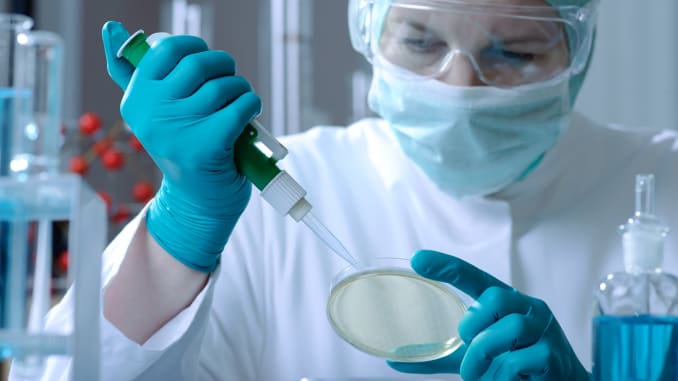
Driverless cars, artificial intelligence, smartwatches are more – the future is truly upon us. With science and technology developing so quickly, medical breakthroughs continue to be made every day all around the world.Here are 15 of the most mind-blowing medical discoveries of the past nine years.
3D PRINTING
what’s not well-known is that scientists have successfully created human body parts using 3D printers. A San Diego company called Organovo has also committed itself to printing human livers, and a 3D-printed partial liver transplant is expected by 2020.
Other exciting new medical applications for 3D printing include the printing of denture material such as crowns, orthodontic appliances and dentures, as well as hearing aids and inexpensive customised prostheses for landmine amputees. Surgical applications of 3D printing are also evolving rapidly, with 3D printed models being used to plan complex neurosurgical procedures, craniofacial reconstruction and spinal surgery.
Gene therapy
Gene therapy is the modifying of someone’s DNA to treat disease, rather than just treating the symptoms like most drugs on the market. The use of gene therapy technology to treat blood cancers such as leukaemia is one of the most exciting medical developments in recent history. Recent experiments have also revealed the potential for gene therapy to be used in reversing other types of cancers such as breast cancer.
Gut bacteria treatments
Amazingly, scientists have discovered that the mix of bacteria or microbes in our digestive system.Microbiome therapy now focusing on other possible applications including treatments for cancer, metabolic disease, mental illness, autoimmune disease and even sports performance. Gut bacteria may one day be used as part of possible treatments for diseases such as ulcerative colitis and Crohn’s disease, as well as common allergies and cancers.
Cancer Therapies
Cancer fingerprinting is a new approach to analysing how specific cases of cancer react to different treatments. Every incidence of cancer has a unique fingerprint or identity code, and cancer fingerprinting allows medical staff to analyse the mutated genes of tumours and understand how sensitive particular cancers will be to different types of chemotherapy. While still not widely used in surgery, chemotherapy and radiation therapy, immunotherapies have been approved to treat people with many types of cancer and are currently being studied in a number of clinical trials.
Bionic Eye
The development of bionic eye. The artificial eye uses a camera set into the user’s glasses, and the camera then transmits electrical messages wirelessly into the user’s retinal implant. And hot off the press, a new wireless bionic eye developed in Australia will be tested in humans for the first time later this year. While it won’t fully restore sight, it’s hoped that it will restore enough vision to improve a blind person’s level of function in their daily activities. Trials will start this year and will take 6 to 12 months, with the results expected to be announced in 2019.
Hormones for heart treatment
Serelaxin, a synthetic version of the hormone relaxin developed by Novartis, had been shown in trials to boost survival rates in patients by 37%. The drug works by opening up the blood vessels and had an anti-inflammatory impact on the system. So, unfortunately, as far as breakthrough heart treatments are concerned, for now at least we can only say …. watch this space.
Faecal Transplants
Faecal transplants involve removing good bacteria from a healthy person’s faecal matter and transplanting it into a patient’s colon. They have also been used to successfully treat people infected with C. difficile, which is a type of infectious diarrhoea responsible for around 15,000 deaths each year. While there are no immediate plans to start using faecal transplants to treat conditions such as depression or weight disorders, some researchers believe that faecal transplants could play a role in the future of a number of different treatments.
Hepatitis C
Hepatitis C is a potentially fatal disease that causes 12,000 deaths every year. Around 30% of people can’t be cured, and those who are cured undergo a heavy anti-viral-drug treatment program that lasts for nearly a year and is associated with major side effects. With a 95% cure rate and a treatment program lasting only 12 weeks, a new drug called Sofosbuvir could help patients avoid the extended treatment period and improve the rate of people cured from Hepatitis C. Some only work on specific strains, Sofosbuvir works against all six major types of Hepatitis C.Sofosbuvir also has very few side effects and requires only one daily dose, making it ideal for widespread use in the quest to eliminate Hepatiti
Seizure
Epilepsy is a chronic brain disorder producing unpredictable seizuresthat can have a debilitating effect on a sufferer’s lifestyle, with around 50 million people suffering from epilepsy worldwide. In 2013, a company called NeuroPace revolutionised epilepsy therapy by developing the RNS System; the world’s first closed loop, brain-responsive neuromodulation system. Responsive neurostimulation, the science behind the RNS System, holds a great deal of promise for the future.
Synthetic Cells
In 2010, the first completely new synthetic cells were created by stitching together chemicals to synthesise the full genome of a bacterium. This could open the way to new treatments in synthetic biology that could have applications in a range of industries, from biofuels to healthcare. Research on synthetic cells progressed rapidly in 2015, when a group of Japanese biologists created a synthetic “protocell” made from DNA and proteins packaged inside lipids. Then in 2017, Israeli researchers developed synthetic cells that could function autonomously and be used to kill cancers. After being implanted in breast cancer tumours, they were encoded to produce an anti-cancer protein, which they did, killing cancer cells en masse and with little damage to surrounding healthy tissue.
Cluster Headaches
Cluster headaches are chronically painful headaches many times more intense than a migraine. They can occur up to eight times a day and last from 2 weeks up to 3 months or longer. Fortunately for sufferers of this debilitating condition, researchers at the Cleveland Clinic may be close to an effective, practicable treatment. Their research involved successfully implanting a small device behind a patient’s upper jaw. The device works by sending electrical pulses into the patient’s head and can be operated via remote control.
New Type of Antibiotics
The emergence of superbugs makes discovering new antibiotics more critical than ever. The discovery of the first new class of antibiotics in 30 years was therefore welcome news in the medical field. it is known as teixobactin, can kill serious infections such as tuberculosis and septicaemia without encountering resistance MRSA. In 2015, a University of Lincoln team revealed that it had developed a synthesised version of teixobactin with a much faster and easier synthesis process. But with 10 million people worldwide predicted to succumb to drug-resistant infections every year by 2050, this latest development is an important milestone in the quest to developing a new weapon in the war against superbugs.
Graphene
At one atom thick, graphene is the thinnest material known to man. It’s also around 200 times stronger than steel, is an excellent conductor of heat and electricity, and has unique light absorption abilities. But while graphene has excellent potential for a variety of applications, a major factor preventing its wide distribution is its high cost of production. Other researchers have found new ways to eliminate the need for highly controlled production environments by growing graphene film in ambient air with a natural.
Cataract Treatment
Cataracts are a leading cause of blindness around the world, and current treatment options are limited to an operation to replace the clouded lens with an artificial one.
T-cells Programming
Programming T-cells to fight a particular type of leukaemia has resulted in an extraordinary success rate in experimental trials. Of the patients suffering from acute lymphoblastic leukaemia who received the trial treatment, 94% experienced an elimination of symptoms. More than half of the patients had a complete remission of their cancer. This new immunotherapy treatment known as Adoptive Cell Transfer (ACT) involves taking immune cells from patients and reprogramming them with receptor molecules to target specific types of cancer.
Conclusion
These 19 developments only scratch the surface of the incredible medical breakthroughs that have occurred in the last nine years. Though there are plenty of technological advancements to be concerned about – weapons, surveillance and an increasingly virtual world, to name a few – these advances in medicine show the potential for humans to work together to engineer a brighter, healthier future for all.
Author : S.Anitha
MSc botany, government arts college, Coimbatore 641018

